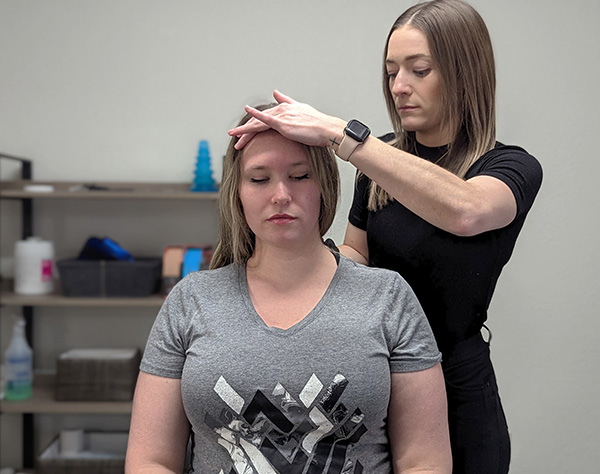Headaches affect millions of people, but not all headaches are the same. Distinguishing between migraines and tension headaches is essential for effective treatment. Knowing these differences can lead to better solutions for those considering chiropractic care.
Understanding the Difference Between Migraines and Tension Headaches
Headaches come in various forms, with migraines and tension headaches being the most common. While they share some similarities, these two types of headaches differ significantly in symptoms, triggers, and underlying causes.
What Is a Migraine?
Migraines are intense headaches that often strike one side of the head with throbbing pain. They can bring along nausea, vomiting, and a heightened sensitivity to light and sound, making daily life challenging. These episodes might last from a few hours to several days. Stress, certain foods, hormonal shifts, and environmental factors like bright lights or strong odors can trigger migraines. Recognizing these triggers helps you manage and prevent them.
What Is a Tension Headache?
Tension headaches are the most common type of headache, often described as a dull, aching sensation that feels like a tight band around the forehead or neck. Unlike migraines, they usually don’t cause nausea or sensitivity to light and sound. Stress, poor posture, and muscle tension in the neck and shoulders are common culprits. While generally less severe than migraines, frequent tension headaches can still disrupt daily life. Pinpointing the causes can lead to effective management strategies.
Tension Headache vs Migraine: Key Differences
To find the right treatment, you must distinguish between tension headaches and migraines. Migraines often involve severe, throbbing pain on one side of the head, nausea, and sensitivity to light and sound. Tension headaches, on the other hand, usually involve a steady, dull ache that feels like a tight band around the forehead or neck without those extra sensory issues.
The duration of these headaches also sets them apart. Migraines can last from a few hours to several days, significantly disrupting daily life. Tension headaches are generally shorter, often clearing up in a few hours, though they can linger in chronic cases.
The triggers for each type differ as well. Stress, hormonal changes, certain foods, or bright lights might set off migraines. Tension headaches are often linked to stress, muscle tension, and poor posture, making lifestyle changes an important part of managing them.
How Chiropractors Treat Migraines and Tension Headaches
Chiropractors provide effective, non-invasive solutions for managing migraines and tension headaches. By addressing underlying causes such as spinal misalignments and muscle tension, chiropractic care helps reduce the frequency and intensity of headaches while improving overall well-being.
Chiropractic Care for Migraines
Chiropractors take a comprehensive approach to managing migraines by focusing on spinal health and lifestyle adjustments. They perform spinal adjustments to improve alignment, which can help reduce nerve irritation that might trigger migraines. This can lead to fewer and less intense migraine episodes.
Beyond adjustments, chiropractors often suggest therapies like massage to ease tension and boost circulation. They may also provide dietary guidance to help patients identify and avoid migraine-triggering foods. Stress management is another vital component, with chiropractors offering relaxation techniques and ergonomic advice to help minimize stress-related migraine triggers.
Chiropractic Care for Tension Headaches
When it comes to tension headaches, chiropractors aim to relieve muscle tension and correct posture. Misalignments in the neck and upper back can cause muscle strain, contributing to tension headaches. Chiropractors use targeted spinal adjustments to restore alignment and reduce muscle tension, easing headache symptoms.
They also incorporate soft tissue therapies, such as myofascial release or trigger point therapy, to further relax tight muscles. Ergonomic advice is often part of the treatment, helping patients maintain better posture during daily activities to prevent tension headaches. Chiropractic care offers a thorough approach to managing tension headaches by addressing physical and lifestyle factors.
Treating Headaches Begins with Identification
Distinguishing between migraines and tension headaches is key to finding effective relief. Each type of headache presents unique challenges, and recognizing these can guide you toward the right treatment. Chiropractic care stands out as a comprehensive approach, addressing the symptoms and root causes like spinal issues and lifestyle habits.
For those exploring alternative treatments, chiropractic care offers a personalized path. Through spinal adjustments, soft tissue therapies, and lifestyle guidance, chiropractors can help manage headaches more effectively. If migraines or tension headaches are affecting your life, consider reaching out to Whitefish Chiropractic for a tailored treatment plan. Visit our scheduling page to book your consultation today.

